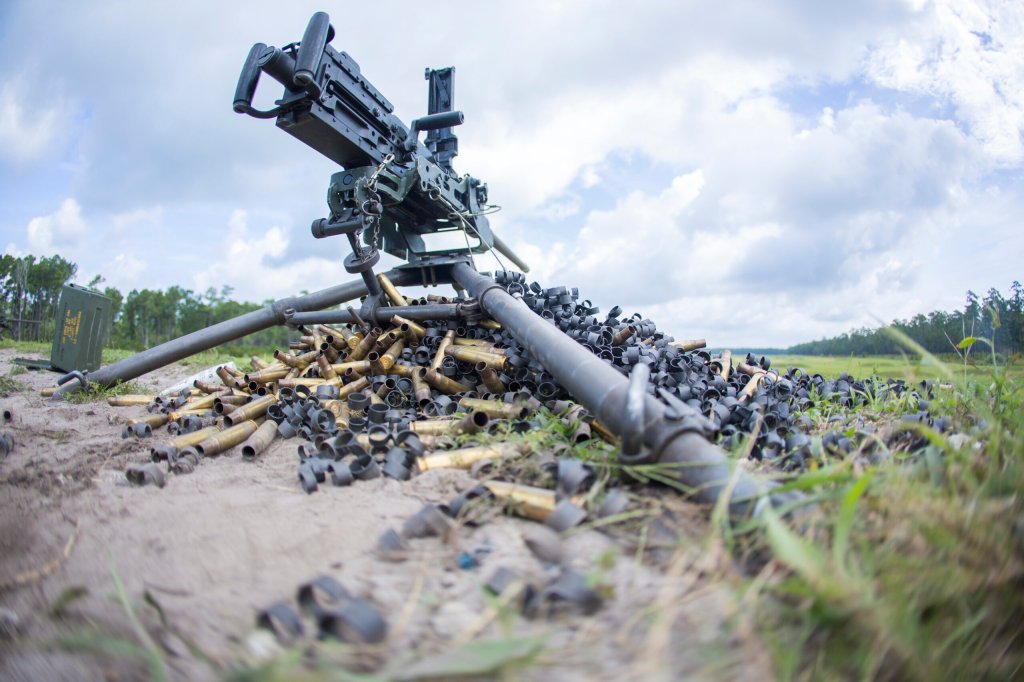

You must have seen a movie in which the protagonists empties their entire magazine through automatic fire and hits the target every single time. And if you’re a fan of video games, you must have played at least one first-person shooter that made you believe that automatic weapons essentially turn you into a god of war. Unfortunately, that’s the literal opposite of what the truth is, as automatic firearms aren’t used like that in real-life combat, and here’s why.
Automatic fire is inaccurate
In real life, if they have the option to choose their rate of fire, professionals like to stick to single-fire mode. Why? Because automatic fire is inaccurate.
What video games and movies don’t depict correctly is the insane recoil automatic fire causes.
Let’s take the AK47 as an example since it’s the most popular assault rifle on the planet. The AK has only the automatic fire option (although there are newer models that let you choose your rate of fire), but you can easily control it by simply letting go of the trigger.
If you actually held your finger down on the trigger for, let’s say, five seconds – the barrel of your gun would move upwards and you would have to physically push your gun down.
Because of this, you’re not going to hit anything – you will simply lose control of your weapon.
Of course, by lying down when shooting and using short bursts of fire, you can minimize the recoil, but it’s still much more difficult to control than single-shot recoil.
In real life, if professionals think that the situation calls for automatic fire, they keep their rate of fire controlled by shooting in three-round bursts. There are some weapons that have this specific option – automatic three-round fire.
This, however, is not the optimal choice. The best choice is still single-shot fire. Even if you have to pull the trigger twice quickly, you’re not going to lose that much time.
Automatic fire saves a little bit of time in between shots, but that comes at a high cost of accuracy.
It’s difficult to control the situation during automatic fire
Law enforcement and the military are trained to place a few quick, but accurate shots on target – not to go in guns blazing and spray the place with automatic fire.
If you open fire in automatic mode and fire for a longer time (in automatic fire terms, ‘a longer time’ is anything more than three rounds), you’re quickly going to lose sight of what’s happening around you.
By using quick, successive shots, you’re still maintaining a high rate of fire, but you’re not applying all your focus on controlling the recoil and keeping your fire on target.
It’s difficult to explain it until you’ve tried it yourself, but the low accuracy that comes with automatic fire is overwhelming and you suddenly find yourself struggling to hit the target.
You’ll also quickly lose track of how many rounds you’re firing and you’ll come up empty.
All in all, controlled fire is not only more accurate, but it gives you more control over the situation, while automatic fire only adds to the chaos.

What are the exceptions?
The most notable exceptions are mounted machine guns – these automatic weapons need to be placed on a pod because of the massive recoil they produce.
This makes them easier to control than most handheld machine guns, so they’re not as inaccurate as their dismounted counterparts.
Some automatic weapons that use small caliber bullets don’t have strong recoil and they’re easier to control. For example, the Belgian FN P90 has fairly low recoil.
There are also shoulder stocks you can add to automatic weapons that make them easier to fire. Glock 18, a fully automatic machine pistol, can be equipped with a shoulder stock and the recoil is noticeably weaker if you fire it like this.
What are automatic weapons good for in civilian life?
Although automatic weapons are difficult to use effectively in real life (I would never recommend an automatic weapon for self-defense, unless it’s the only weapon you have), they’re great to shoot down the range.
They let you channel your inner John Rambo and you can do some great multi-target routines with them.
